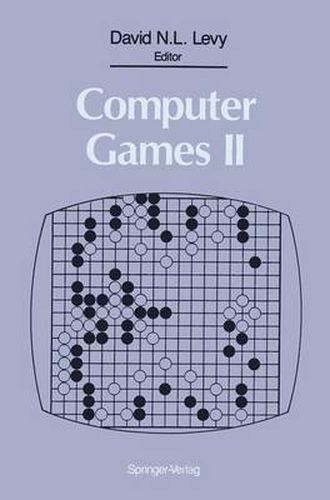Readings Newsletter
Become a Readings Member to make your shopping experience even easier.
Sign in or sign up for free!
You’re not far away from qualifying for FREE standard shipping within Australia
You’ve qualified for FREE standard shipping within Australia
The cart is loading…






This title is printed to order. This book may have been self-published. If so, we cannot guarantee the quality of the content. In the main most books will have gone through the editing process however some may not. We therefore suggest that you be aware of this before ordering this book. If in doubt check either the author or publisher’s details as we are unable to accept any returns unless they are faulty. Please contact us if you have any questions.
Long before the advent of the electronic computer, man was fascinated by the idea of automating the thought processes employed in playing games of skill. The very first chess Automaton captured the imagination oflate eighteenth century Vienna, and by the early 1900s there was a genuine machine that could play the chess endgame of king and rook against a lone king. Soon after the invention of the computer, scientists began to make a serious study of the problems involved in programming a machine to play chess. Within a decade this interest started to spread, first to draughts (checkers) and later to many other strategy games. By the time the home computer was born, there had already been three decades of research into computer games. Many of the results of this research were published, though usually in publications that are extremely difficult (or even impossible for most people) to find. Hence the present volumes. Interest in computers and programming has now reached into almost every home in the civilized world. Millions of people have regular access to computers, and most of them enjoy playing games. In fact, approximately 80 percent of all software sold for use on personal computers is games software.
$9.00 standard shipping within Australia
FREE standard shipping within Australia for orders over $100.00
Express & International shipping calculated at checkout
This title is printed to order. This book may have been self-published. If so, we cannot guarantee the quality of the content. In the main most books will have gone through the editing process however some may not. We therefore suggest that you be aware of this before ordering this book. If in doubt check either the author or publisher’s details as we are unable to accept any returns unless they are faulty. Please contact us if you have any questions.
Long before the advent of the electronic computer, man was fascinated by the idea of automating the thought processes employed in playing games of skill. The very first chess Automaton captured the imagination oflate eighteenth century Vienna, and by the early 1900s there was a genuine machine that could play the chess endgame of king and rook against a lone king. Soon after the invention of the computer, scientists began to make a serious study of the problems involved in programming a machine to play chess. Within a decade this interest started to spread, first to draughts (checkers) and later to many other strategy games. By the time the home computer was born, there had already been three decades of research into computer games. Many of the results of this research were published, though usually in publications that are extremely difficult (or even impossible for most people) to find. Hence the present volumes. Interest in computers and programming has now reached into almost every home in the civilized world. Millions of people have regular access to computers, and most of them enjoy playing games. In fact, approximately 80 percent of all software sold for use on personal computers is games software.